China is a country with a very vast territory, thousands of kilometers from north to south. There is a vast desert in the west and an infinite sea in the east. Tourists can find their favorite land in China. These 10 places are hailed as the most beautiful in China and are also sought after by tourists from all over the world.The Top 10 Most Beautiful Places To Visit In China are these
1.Beijing Forbidden City 北京紫禁城
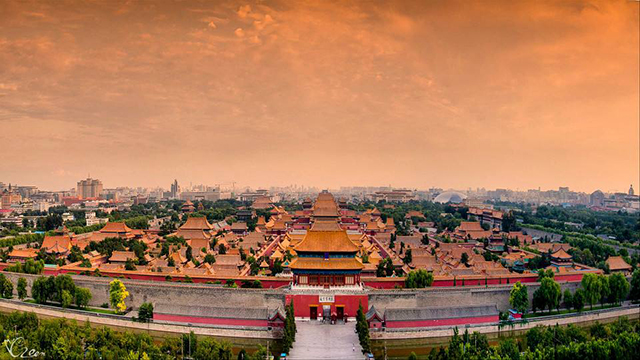
The Forbidden City in Beijing is the royal palace of the Ming and Qing Dynasties in China. It is located in the center of Beijing’s central axis and is the essence of ancient Chinese palace architecture. The Forbidden City in Beijing is centered on the three main halls. It covers an area of 720,000 square meters and has a construction area of about 150,000 square meters. There are more than 70 large and small palaces and more than 9,000 houses. It is one of the largest and most preserved ancient wooden structures in the world.
The Forbidden City in Beijing began construction in the Ming Dynasty (1406), and was built on the foundation of the Nanjing Forbidden City. It was completed in the 18th year of Yongle (1420). It is a rectangular city, 961 meters long from north to south, 753 meters wide from east to west, with a wall of 10 meters high on all sides and a moat with a width of 52 meters outside the city.
Known as the world’s five major palaces (Beijing Forbidden City, Versailles, France, Buckingham Palace, White House, Russian Kremlin), the Forbidden City is the national AAAAA tourist attraction. It was listed as the first national key cultural relics protection unit in 1961. In 1987 it was listed as a World Cultural Heritage.
From January 2012 to June 2018, the National Palace Museum received a total of 100 million visitors. Starting in 2019, the National Palace Museum will try to sell tickets in separate time slots. On September 3, 2018, the Palace of the Yangxin Palace officially entered the implementation stage of the research and restoration of ancient buildings.
2.Great Wall of Beijing 北京长城
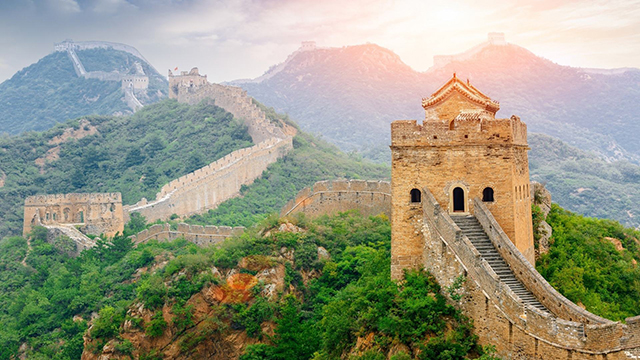
The Great Wall is a military defense project in ancient China. It is a tall, sturdy and continuous long raft that is used to limit enemy riding. The Great Wall is not a purely isolated city wall, but a defense system that combines a city wall as the main body and a large number of cities, barriers, pavilions, and standards.
The history of the Great Wall construction can be traced back to the Western Zhou Dynasty. During the Spring and Autumn Period and the Warring States Period, the countries competed for hegemony and defended each other. The Great Wall built into the first climax, but the length of construction was relatively short. After Qin eliminated the reunification of the six countries, Qin Shihuang connected and repaired the Great Wall of the Warring States and began to be known as the Great Wall. The Ming Dynasty was the last dynasty to overhaul the Great Wall. Today, many of the Great Walls that people saw were built at this time.
The Great Wall resources are mainly distributed in 15 provinces, autonomous regions, such as Hebei, Beijing, Tianjin, Shanxi, Shaanxi, Gansu, Inner Mongolia, Heilongjiang, Jilin, Liaoning, Shandong, Henan, Qinghai, Ningxia and Xinjiang. Among them, Shaanxi Province is the province with the richest resources in China’s Great Wall. The length of the Great Wall in China is 1,838 kilometers. According to the results of the National Great Wall Resources Survey of the Cultural Relics and Surveying and Mapping Department, the total length of the Ming Great Wall is 8851.8 kilometers, and the Qin and Han Great Walls exceed 10,000 kilometers, with a total length of more than 21,000 kilometers.
On March 4, 1961, the Great Wall was announced by the State Council as the first batch of national key cultural relics protection units. In December 1987, the Great Wall was included in the World Cultural Heritage.
3.Xi’an Terracotta Warriors 西安兵马俑
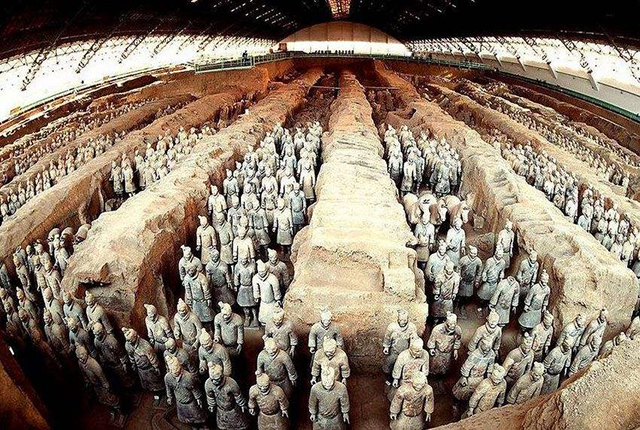
Terracotta Warriors and Horses, namely Qin Shihuang Terracotta Warriors and Horses, also referred to as Qin Terracotta Warriors or Horses, the first batch of national key cultural relics protection units, the first batch of Chinese World Heritage Sites, located in the Terracotta Warriors and Horses 1.5 km east of the Qin Shihuang Mausoleum in Lintong District, Xi’an City, Shaanxi Province.
Terracotta Warriors are a category of ancient tomb sculptures. In ancient times, human beings were practiced. The slaves were the attachments of the slave masters. After the slave owners died, the slaves were to be buried as slaves. The terracotta warriors and horses are made into funerary objects in the shape of soldiers and horses (chariots, horses, soldiers).
On March 4, 1961, the Mausoleum of Emperor Qin Shihuang was announced by the State Council as the first batch of national key cultural relics protection units. In March 1974, Terracotta Warriors and Horses were discovered; in 1987, the Mausoleum of the First Qin Emperor and the Terracotta Warriors and Horses were approved by UNESCO to be included in the World Heritage List, and were hailed as the “eighth wonder of the world”. There were more than 200 foreign heads of state. Visited by the head of government and became a golden business card of the ancient Chinese splendid civilization, known as one of the world’s top ten ancient tomb treasures.
4.Yichang Three Gorges Dam 宜昌三峡大坝
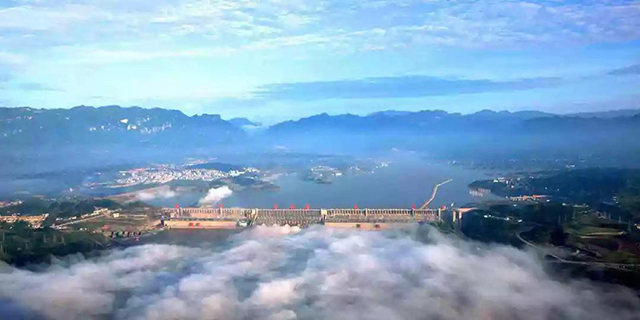
The Three Gorges Dam is located in Sandouping Town, Yichang City, Hubei Province, China. It is 38 kilometers away from the downstream Gezhouba Water Conservancy Project. It is the main hydropower project in the world, the main project of the Three Gorges Hydropower Station and the core landscape of the Three Gorges Dam Tourist Area. The eastern end of the Three Gorges Reservoir.
The Three Gorges Dam project consists of two parts, the main building and the diversion project. The total length is about 3335m and the dam height is 185m. The total investment of the project is 95.46 billion yuan. It was officially started on December 14, 1994. May 20, 2006 The entire line was successfully built.
The dam of the Three Gorges Hydropower Station is 185 meters high, with a normal water storage capacity of 175 meters, a reservoir length of 2,335 meters, a static investment of 135.266 billion yuan, and installation of 32 hydropower units with a single unit capacity of 700,000 kilowatts. The last hydropower unit of the Three Gorges Power Station was put into operation on July 4, 2012. This means that the Three Gorges Hydropower Station with an installed capacity of 22.4 million kilowatts has become the world’s largest hydropower station and clean energy production base on July 4, 2012. .
In December 2015, the Three Gorges Dam was selected as one of the 30 best tourist new landscapes in the Three Gorges of the Yangtze River.
5.Jiuzhaigou, Sichuan 四川九寨沟
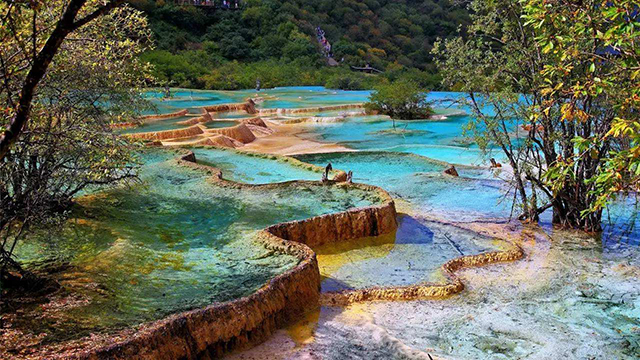
Jiuzhaigou: World Natural Heritage, National Key Scenic Spot, National AAAAA Grade Scenic Spot, National Nature Reserve, National Geological Park, World Biosphere Reserve Network, is China’s first nature reserve with the main purpose of protecting natural scenery.
Jiuzhaigou is located in Jiuzhaigou County, Aba Tibetan and Qiang Autonomous Prefecture, Sichuan Province. It is located in the transitional zone between the Qinghai-Tibet Plateau, the western Sichuan Plateau and the mountainous area to the Sichuan Basin. It is more than 300 kilometers away from Chengdu in the south. It is a valley valley with a depth of more than 50 kilometers and a total area of 64,297 hectares. The forest coverage rate is over 80%. Because there are nine Tibetan villages such as Shuzhengzhai, Heyezhai, and Chayuzhai in the ditch, they are named after this mountain lake group.
The main protection objects of Jiuzhaigou National Nature Reserve are rare animals such as giant pandas and golden monkeys and their natural ecological environment. There are 74 countries that protect rare plants, 18 countries that protect animals, and rich fossils of ancient fossils and ancient glaciers.
Affected by the earthquake, Jiuzhaigou Scenic Area stopped receiving tourists on August 9, 2017.
From March 8th, 2018, some landscapes in Jiuzhaigou Scenic Area will be reopened. The open area is the landscape along the Mizoguchi-Changhai section of Jiuzhaigou Scenic Area, with special car guidance and team tour.
6.Tibet Potala Palace 西藏布达拉宫
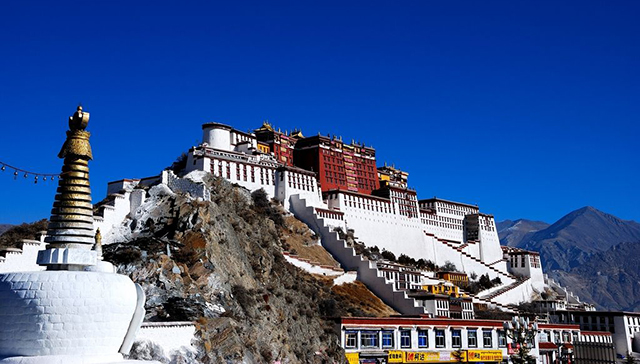
The Potala Palace (Tibetan: པོ་ཏ་ལ), located on the northwestern Mabu Rishan in the city of Lhasa, the capital of the Tibet Autonomous Region of China, is the world’s highest building with a palace, a castle and a monastery. Tibet’s largest and most complete ancient palace complex.
The Potala Palace is built on the hills and overlaps with the buildings. It is an outstanding representative of Tibetan ancient architecture (it is said to originate from Sangzhu Zongbao). The essence of the Chinese ancient architecture is the fifth set of RMB 50 yuan banknotes. Landscape pattern. The main building is divided into two parts, the White House and the Red Palace. The palace is more than 200 meters high, with 13 floors and 9 floors. The Potala Palace Square is located in front of the Potala Palace and is the highest city square in the world.
The Potala Palace is a sacred place for Tibetan Buddhism (Grupo), and there are countless pilgrims and tourists visiting the country every year. In March 1961, the State Council listed it as the first batch of national key cultural relics protection units; in December 1994, UNESCO listed it as a World Cultural Heritage; in January 2013, the National Tourism Administration listed it as a national AAAAA-level tourist attraction. . From November 1st, 2018 to March 15th, 2019, the Potala Palace is free to visit.
7.Shanghai Bund 上海外滩
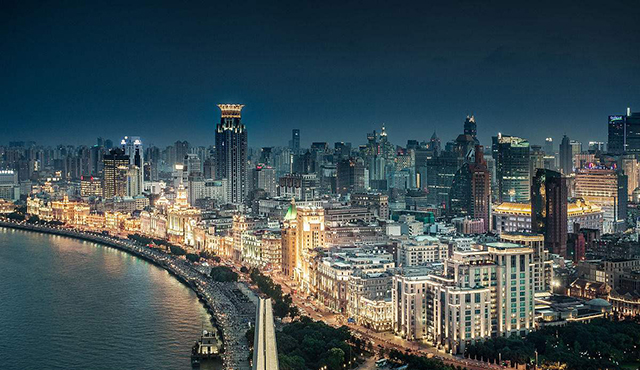
The Bund (English: The Bund; Shanghai dialect: nga thae) is located on the Huangpu River in Huangpu District, Shanghai, which is outside Huangpu Beach and is a historical and cultural block in China. Since 1844 (four years after the Qing dynasty), the Bund area has been designated as the British concession, which is a true portrayal of the Shanghai Shili Ocean, and the starting point for the old Shanghai concession area and the entire modern city of Shanghai.
The Bund is 1.5 kilometers long. It starts from Yan’an East Road in the south, to the Waibaidu Bridge on the Suzhou River in the north, to the Huangpu River in the east, and to the west of the old Shanghai financial and foreign trade institutions. After Shanghai became a commercial port, foreign banks, business banks, general meetings, and newspapers began to gather here. The Bund became the financial center of the country and even the Far East. In August of the 32nd year of the Republic of China (1943), the Bund was handed over to the Shanghai Public Concession in the Wang Puppet National Government, ending the 100-year concession period. In the 34th year of the Republic of China (1945), it had the official road name of Shandong First Road.
The Bund stands with 52 classically revival buildings of different styles. It is known as the Bund International Architecture Expo Group. It is one of the important historical sites and representative buildings of China’s modern times and one of Shanghai’s landmarks. In November 1996, the State Council listed it as the fourth batch of national key cultural relics protection units. Lujiazui in Pudong, which is opposite to the Bund, has Shanghai landmarks such as Oriental Pearl, Jinmao Tower, Shanghai Tower, and Shanghai World Financial Center. It has become a symbol of China’s reform and opening up and a microcosm of Shanghai’s modernization.
8.Sichuan Wolong Nature Reserve 四川卧龙自然保护区
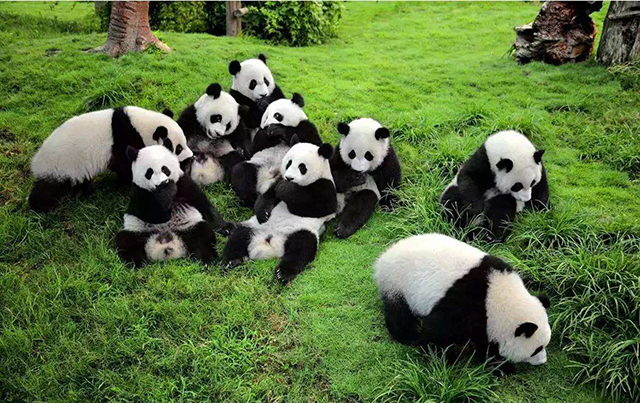
Wolong Nature Reserve is located in the southwestern part of Wenchuan County, Aba Tibetan and Qiang Autonomous Prefecture, Sichuan Province, on the southeast slope of the Lushan Mountain Range, 130 kilometers away from Chengdu, the capital of Sichuan Province, with convenient transportation. After the Wenchuan earthquake, the Hong Kong Special Administrative Region funded the construction of the Wolong Nature Reserve.
Wolong Nature Reserve is the third largest nature reserve in the country. The largest natural reserve in Sichuan Province with the most complex natural conditions and the most rare flora and fauna. The reserve covers the townships of Wolong and Yuda, with a length of 52 kilometers from east to west and 62 kilometers from north to south, with a total area of about 700,000 hectares. It mainly protects the natural ecosystems of the southwestern alpine forests and rare animals such as giant pandas.
In July 2018, the leopard first appeared in the “Panda Kingdom” Wolong National Nature Reserve.
9.Hong Kong 香港
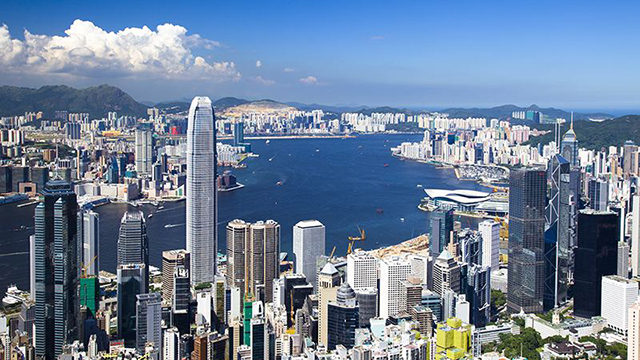
Hong Kong, referred to as “Hong Kong” (HK), is known as the Hong Kong Special Administrative Region of the People’s Republic of China (HKSAR). It is located in the south of China, east of the Pearl River Estuary, along the South China Sea, north of Shenzhen, Guangdong Province, west of the Pearl River, and across the Pearl River Estuary from the Macao Special Administrative Region, Zhuhai City and Zhongshan City.
Hong Kong is a highly prosperous international metropolis with a total area of 262 islands including Hong Kong Island, Kowloon, the New Territories and surrounding areas. It has a total land area of 1106.34 square kilometers and a sea area of 1644.69 square kilometers. As of the end of 2017, the total population is about 740,800, one of the highest population density areas in the world.
Hong Kong has been China’s territory since ancient times. Between 1842 and 1997, Hong Kong was a British colony. After World War II, Hong Kong’s economy and society developed rapidly. It was not only hailed as one of the “Asian Four Little Dragons”, but also became one of the richest, most economically developed and living standards in the world. On July 1, 1997, the Chinese government resumed the exercise of sovereignty over Hong Kong and the Hong Kong Special Administrative Region was established. The central government has full jurisdiction over Hong Kong. Hong Kong maintains its original capitalist system and way of life, and enjoys a high degree of autonomy in everything except diplomacy and national defense. “One country, two systems”, “Hong Kong people ruling Hong Kong” and a high degree of autonomy are the basic national policies of the Chinese government.
Hong Kong, New York and London, known as the “Nuremport”, is the third largest financial center in the world, an important international financial, trade, shipping center and international innovation and technology center. It is also the world’s freest economy and the most competitive city. First, it enjoys a high reputation in the world and is ranked third in the world’s first-tier cities by GaWC.
Hong Kong is a place where Chinese and Western cultures blend together. It combines Chinese wisdom with Western social institutional advantages. It is known for its clean government, good public order, free economic system and perfect legal system. It has the “Pearl of the Orient”. “Gourmet paradise” and “shopping paradise” and other reputation.
10.Guilin, Guangxi 广西桂林
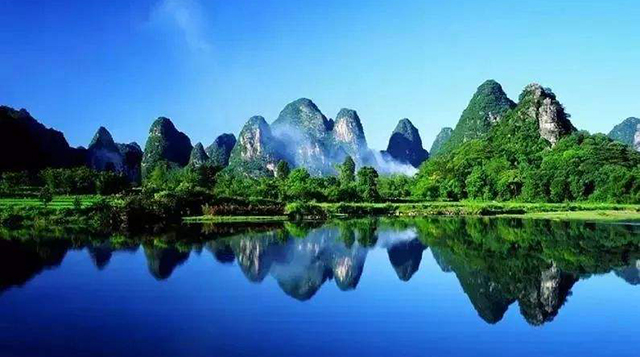
Guilin is a world-famous scenic city, an important international tourism city, an international tourism shipping hub, a national health tourism demonstration base, and a eternal wisdom place. It is an international tourist destination approved by the State Council; it is the UN World Tourism Organization/ Asia Pacific Tourism Association Tourism Trends and Prospects International Forum Permanent Place, the Central Military Commission Guilin Joint Service Center.
Guilin is connected to Hunan and Guizhou in the north, Liuzhou in the southwest, and Hezhou in the east. It is a mountainous hilly area and a typical karst karst landform. The limestones all over the city have been weathered and eroded by billions of years, forming a thousand peaks, one water and the city, and the cave stone. Beautiful landscape. In 2017, the city has 17 districts (cities) and high-tech zones, with a total area of 27,800 square kilometers, a resident population of 5.3 million, 9 state-level key scientific research centers and 15 colleges and universities.
Guilin is one of the most convenient international tourism hubs for southwest, south China, and south-central China, the gateway city of the ASEAN Free Trade Area, and one of the best tourist cities in China recommended by the World Tourism Organization. It is an important link between the “Belt and Road” and the border between Fujian and Guangdong. point. In 2017, Guilin’s inbound tourism destination ranked fourth in the country, second only to Beijing and Shanghai. So far, Guilin has received nearly 200 foreign heads of state and political figures.